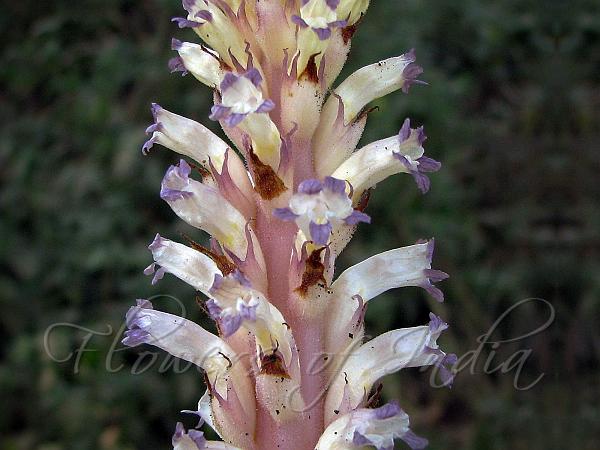|
| Nodding Broomrape |
|

|

| File size | 364296 |
| Original date | 10/19/13 11:10 AM |
| Resolution | 1600 x 1200 |
| Flash | Flash did not fire, auto |
| Focal length | 6.0mm |
| Exposure time | 1/250s |
| Aperture | 4.0 |
| Focus Distance | |
| Metering Mode | Multi-segment |
| Camera make | Canon |
| Camera model | Canon PowerShot S5 IS |
| Sensor type | OneChipColorArea |
|
|
|
|
Photo: |
Botanical name: Orobanche cernua Family: Orobanchaceae (Broomrape family)
Synonyms: Orobanche bicolor, Orobanche sarmatica
Synonyms: Orobanche bicolor, Orobanche sarmatica
Nodding Broomrape is aiennial or perennial
parasitic herb, 15-30 cm tall, simple, erect, pale brownish or
purplish, sometimes thickened and short. Scales are ovate to
lanceolate, acuminate. Flower spikes are 10-20 cm long, often densely
many flowered. Bracts are ovate to lanceolate, shorter or as long as
the corolla, broad to narrow; bracteoles absent. Calyx is as long as
the corolla, divided completely at the back to 2-segments; each lateral
segment 2-fid to sometimes almost entire, very variable, teeth ± as
long as the tube or shorter. Flowers are 1.5-2.0 cm long, usually
prominently curved, hairless to velvety above, tubulose; tube often
whitish or pale, hardly to slightly inflated below; limb shortly lobed,
bluish, sometimes violaceous to brownish, irregularly toothed to
subentire. Capsules are suborbicular, 5-7mm long; stigma usually
darker, bilobed. It is a parasitic plant of Sunflower, and Solanaceae.
Broomrape seedlings put out a root-like growth, which attaches to the
roots of nearby hosts. Once attached to a host, the broomrape robs its
host of water and nutrients. Nodding Broomrape is native to Asia,
Africa.
Identification credit: Shrikant Ingalhalikar
| Photographed near Kolhapur, Maharashtra. |